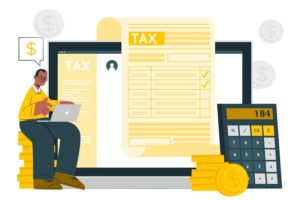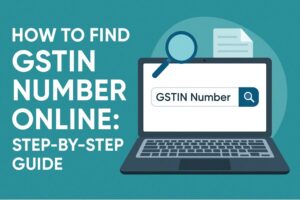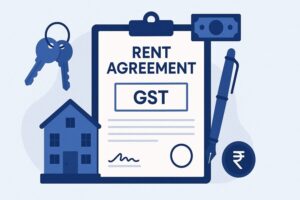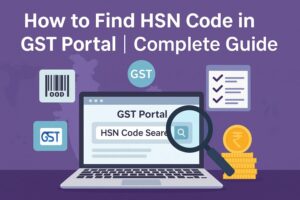GST Refund on Input Services
- 7 Apr 25
- 16 mins

GST Refund on Input Services
Key Takeaways
- GST refunds allow recovery of GST paid on business-related input services.
- Eligible refunds cover zero-rated supplies and specific inverted duty scenarios.
- Input services include financial, legal, accounting, rental, and consultancy services.
- Supreme Court denied refunds for input services under inverted tax structures.
- GST refund claims require precise documentation and accurate, timely filing.
The introduction of GST in India has led to immeasurable improvement in the country’s overall tax collection system, completely remodelling the landscape in the process. Through a GST refund claim on input services, one can claim a refund of the GST paid on input services. Such services may have been utilised for business purposes, but not for taxable supplies.
This GST refund process needs the taxpayer to take particular steps, and submit necessary documents and a declaration to the GST authorities in order to claim the GST refund. The GST refunds may be for the extra cash balance already deposited in the electronic cash ledger.
Alternatively, it can be the tax paid by mistake/accumulated Input Tax Credit (ITC) that was not utilised for tax payments (owing to an inverted tax structure/zero-rated sales). Moreover, GST refund forms differ based on the type of GST refund claimed.
Hence, this blog shall further dive into important definitions related to GST refund on input services, the eligibility criteria for refund claims, case examples, kinds of input services, and more.
Important Definitions Related to GST Refund on Input Services
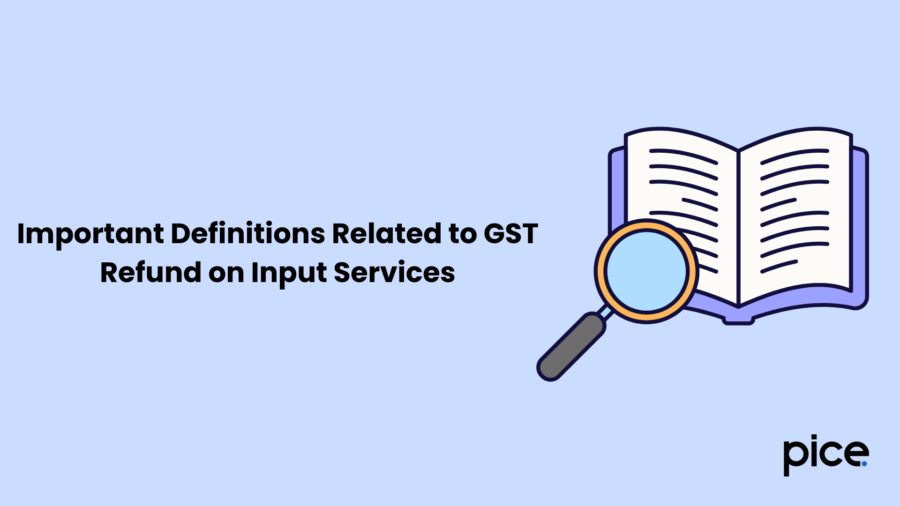
In this section we will discuss some important definitions of GST Refund on Input Services. So keep reading.
Refund
Refund of tax applies to the supply of goods considered as deemed exports. It applies to zero-rated supplies of goods or services/both. Moreover, refund of unutilised input tax credit (ITC) resulting from a higher tax rate on the input than on the output. It is also utilised in establishing zero-rated supplies for inputs/input services.
Input Services
Under section 2(60) of the CGST Act, input services refer to any services utilised or intended to be utilised by a supplier during the course of or furtherance of their business.
Input Tax Credit
Input Tax Credit, abbreviated as 'ITC', refers to the GST paid by a taxable person as they avail goods and/or services that are/ will be utilised for their business. Input ITC may be reduced in the context of the GST payable on sales by the taxable person, upon the fulfillment of certain conditions.
Output Supplies
Under section 2(83) of the CGST Act, output supplies refer to the supply of goods or services/both. This may be done through sale, barter, transfer, licence, rental, exchange, disposal, lease or any other method. Note that the mode shall be agreed upon beforehand by the taxable person, and to be done within the course or furtherance of their respective business.
Zero-Rated Supply
Section 16 of the IGST Act states that the zero-rated supply denotes any of the following supplies of goods or services/both:
● Export of goods or services/both
● Supply of goods or services/both to a Special Economic Zone developer/Special Economic Zone Unit
Eligibility for Refund Claims
According to the the provisions under section 54 of the CGST Act, no GST refund of the unlisted ITC will be accepted in any case, other than:
● Zero-rated supply made without the payment of tax;
● When credit has been levied on the basis of the tax rate on the inputs, that is more than the tax rate on outputs supplies (excluding nil rated/fully exempted supplies)
Therefore, a GST refund can only be claimed in either of the two situations, in the case of zero-rated supply or under an inverted duty structure.
Case Examples
Here are case examples to aid your better understanding:
● Output Supply Rate: 5%/12%: Input goods rate: 18%- Refund could possibly be granted for Input Goods
● Output Supply Rate: 5% /12%: Input service rate: 18%- No refund shall be granted for Input services
Kinds of Input Services with 18% Input Taxes
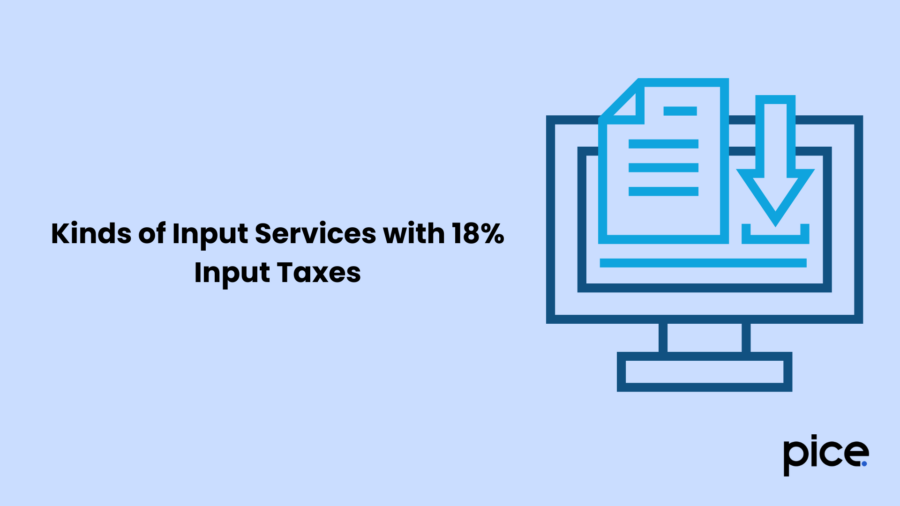
The types of input services which come with an 18% input tax include:
1. Financial Services
Financial services may include insurance, banking, miscellaneous financial transactions, and more. Such services are considered essential for businesses so they can manage their finances, insure their assets, obtain loans, and more, as per long-term company requirements. The input services include:
● Credit card fees
● Bank charges
● Loan processing fees
● Insurance premiums
2. Legal & Accounting services
Legal and accounting services come in handy for businesses so they can ensure compliance with laws and regulations in place. Input services include:
● Tax consulting & compliance
● Audit & assurance services
● Financial statement preparation
● Legal advisory services
3. Rent service
Rent service essentially refers to the rental process of immovable property. This may include factories, offices, warehouses, etc. Businesses are allowed to claim rent as an input service with the condition that it is used for business purposes.
4. Professional service
Professional services may include consulting, engineering as well as architectural services. Such services are crucial for businesses in order for them to obtain expert advice and solutions.
Some examples of professional input services are:
● Engineering services
● Management consulting
● IT Consulting
● Architectural services
5. Works Contract Service
Works contract service refers to services like construction, repair, and renovation of immovable property. This service is opted for by businesses who wish to establish or modify their physical workspaces.
6. Job work services
Job work services refer to the processing/treatment of goods belonging to another entity. Here are some examples of job work services:
● Textile processing services
● Printing and packaging services
● Metal fabrication services
7. Maintenance & Repair services
Maintenance and repair services are necessary for businesses with an aim to maintain their infrastructure, equipment and machinery. The maintenance and repair services include:
● Building maintenance services
● Vehicle repair services
● Equipment maintenance services
Court Rulings
The Supreme Court acknowledges the input tax situation and the decisions on the same, have been reflected through the following rulings:
● Gujarat High Court ruling
The Gujarat High Court rendered to allow the claiming of refund of the unused ITC of “input services”. It shall be a part of the “net input tax credit” (Net ITC) with the aim of the refund’s computation of the claim Under Rule 89(5) of the CGST Rules, 2017 (claiming refund under Sub-section 3 of Section 54 CGST Act, 2017).
Therefore, the court has ruled that the refund of the GST upon the input services will be acknowledged for the refund computation under Rule 89(5) of CGST Rules.
● Madras High Court ruling
The Madras High Court has ruled that no refund of theGST ITC based on the inverted duty structure is permitted.
This above-mentioned judgment is in contradiction with the context of the judgment passed by the Gujarat High Court in the case of VKC Footsteps India Pvt Ltd.
● Supreme Court judgment
The Supreme Court cancelled the order of the Gujarat High Court in its landmark judgment on September 13th, 2021. They verified the judgment of the Madras High Court, rejecting the refund of input services for the inverted duty structure.
The Supreme Court recognised the tough dilemma and went in favour of the Madras High Court. However, they made a suggestion to the GST board to remove this anomaly of law.
Via judgment of the Honourable Supreme Court, the refund of the input services shall not be extended due to the anomaly of the law. The court has highlighted the issue, suggesting to the GST board and urging them to remember and make necessary amendments to the law. This shall be done with the goal of a refund of the services to be issued.
A Step-by-Step Guide on Submitting a Refund Pre-Application Form
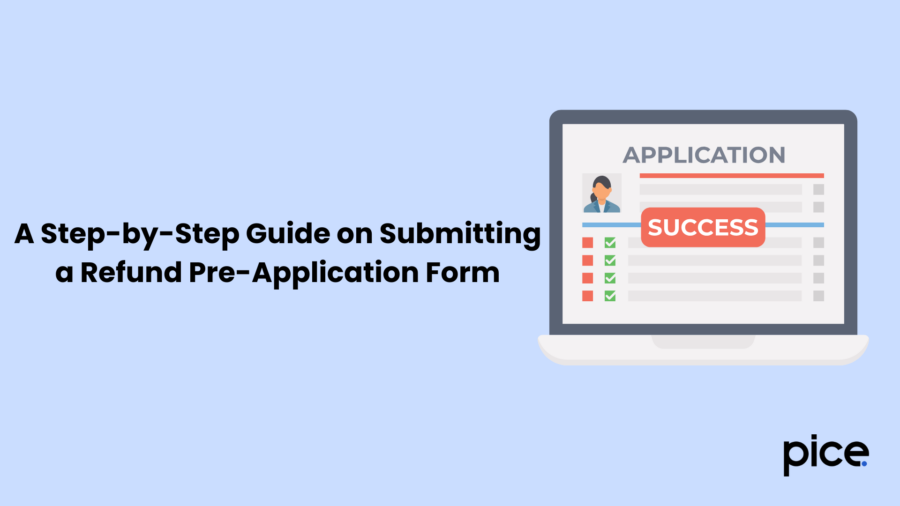
A refund pre-application form is required to be submitted by taxpayers. It must be filled out with important information about their respective income tax details, business details, Aadhaar number, export data, expenditure, investment, and beyond.
This pre-application form is to be filled out for all types of GST refund claims. It need not be signed. Plus, note that it cannot be tweaked or edited post-submission. Therefore, the user has to be careful while putting in the necessary details.
There are a few steps involved in the filing of the GST refund pre-application form. They are as follows:
Step 1: Log in to the GST portal
Step 2: Go to the ‘Services’ tab and click on ‘Refunds’.
Step 3: Select the ‘Refund pre-application form’ option.
Step 4: A page called ‘Refund pre-application form’ will be displayed. Fill in the prompted fields carefully.
Step 5: Click on ‘Submit’ to complete the process.
A confirmation of your submission will be shown on your screen.
Here are the details that you will be required to provide:
| Nature of business | Merchant exporter, Manufacturer, trader, and service provider. |
| Date of issue of IEC (for exporters) | Those applying for a refund on account of exports (without payment of tax) must provide the date of issue of the Import Export Certificate. |
| Aadhaar number | The primary authorised signatory is mandatory. |
| Value of exports made in the FY 2019-2020 (for exporters) | This should be computed at the GSTIN level; not at the PAN level. |
| Income tax | Paid in FY 2018-2019 |
| Advance tax | Paid in FY 2019-2020 |
| Capital expenditure and investment | In FY 2018-2019 |
How to Apply in Form RFD-01 for Various Types of GST Refunds
RFD-01 may be filed for the below-mentioned types of GST refund claims:
● Accumulated ITC owing to exports of goods and services (without tax payment)
● Excess cash balance from the electronic cash ledger/excess tax payment
● Accumulated ITC owing to supplies made to SEZ unit/SEZ developer (minus the tax payment).
● IGST paid on export of services (along with payment of tax)
● ITC accumulated from an inverted tax structure (tax on inputs more than tax on outputs)
● Tax paid on supplies to SEZ units/SEZ developers (with tax payment)
● Receiving deemed exports
● Tax paid on intrastate supply which is later held as interstate supply or vice versa
● On account of Assessment/Provisional Assessment/Appeal/other order
● Once a supplier of deemed exports paid the tax on deemed supplies without charging/collecting tax from the buyer of the same, they become eligible to claim it as a refund (on the basis of a declaration that the recipient/buyer of such deemed exports doesn't claim a refund)
● Unregistered taxpayer refund claim
● Refund on ‘Any other ground’ using RFD-01
Taxpayers are required to declare accurate details in regard to the invoices in GSTR-1 and RFD-01. In certain circumstances, a certificate by a chartered accountant or cost accountant will be required to be submitted.
Here are the steps to follow in order to file a refund application in RFD-01:
Step 1: Log in to theGST portal.
Step 2: Go to the ‘Services’ tab and click on ‘Refunds’
Step 3: Select the 'Application of Refund' option.
Step 4: Proceed to select the relevant reason for the refund/type of refund.
Step 5: Click on ‘Create refund application’.
Step 6: Choose the time period for which a refund shall be applied. Select between ‘Yes’ or ‘No’ on the dialogue box that reads, ‘If you want to file a nil refund’.
Note that in the case of a nil refund application, the registered taxpayer may checkmark the declaration. Then they can proceed to file using either DSC/EVC.
This step does not apply to all types of refunds like in the case of intrastate supply later viewed as interstate supply and vice versa, excess cash balance in the ledger, assessment/provisional assessment/appeal/other order.
Step 7: Input the details on the page that pops up. This will be based on the type of application for refund chosen in the preceding step.
| Refund Type | Instructions |
| Type 1: Excess cash balance in electronic cash ledger | You'll be required to put in the amount to be claimed as a refund. |
| Type 2: Excess tax paid through GSTR-3B | Type in the details of the GSTR-3B in which the payment of tax was done in cash. |
| Type 3: Accumulated ITC owing to exports of goods and services without the payment of tax | There are a few steps to follow.Step a: Download Statement 3 and enter the details of the export invoice documents on which the refund is claimed.Step b: Generate the JSON file and upload it on the GST portal. Validate errors, if any.Step c: In the column, ‘Computation of Refund to be claimed Statement-3A [rule 89(4)]’, enter aggregate turnover, adjusted total turnover and net input tax credit.Step d: Validations take place to compute the maximum amount of refund that the taxpayer is eligible for. |
| Type 4: Accumulated ITC due to supplies made to SEZ unit/SEZ developer (without payment of tax) | The GSTR-1 and GSTR-3B of the chosen period must be filed, as a prerequisite. The rest of the steps remain the same as they were for the Type 3 refund mentioned above. However, note that the statement will be Statement 5 and a CSV file shall be uploaded instead of a JSON file. |
| Type 5: ITC accumulated due to an inverted tax structure | The Inverted tax structure signifies that the rate of tax and amount paid on inputs are more than the outputs. The steps are the same as the ones applicable for Type 3 refunds. Note that the statement provided will be Statement 1A. Provide the necessary details including adjusted total turnover, turnover of inverted rated supply, net input tax credit and tax payable. |
| Type 6: Refund by the recipient of deemed exports | Once the recipient of deemed exports pays the tax on inward supplies which qualify as deemed exports; and claims ITC for the tax they have paid in their electronic credit ledger, the recipient becomes eligible for a refund of the said tax amount. However, the supplier of the deemed exports shall not be able to claim the refund.The steps to claim a refund payment remain the same as the ones in Type 3. Note that the statement will be Statement 5B. So, put in the important details like a refund to be claimed and the net input tax credit of deemed exports. |
| Type 7: Tax paid on supplies made to SEZ unit/SEZ developer (with payment of tax) | Steps remain the same as they were for the Type 3 refund. Statement 4 shall be relevant in this case. With context to the statement uploaded, the refund amount will get auto-populated. |
| Type 8: Tax paid on an intrastate supply later held as interstate supply and vice versa | Steps remain the same as they were for the Type 3 refund. The statement, in this case, will be Statement 6. With context to the statement uploaded, the refund amount will get auto-populated. |
| Type 9: Refund by the supplier of deemed exports | Steps remain the same as they were for the Type 3 refund. The statement shall be Statement 5B. With context to the statement uploaded, the refund amount will get auto-populated. |
| Type 10: Refund of IGST paid on export of services (with tax payment) | Steps remain the same as they were for the Type 3 refund. The statement shall be Statement 2. With context to the statement uploaded, the refund amount will get auto-populated. |
| Type 11: On account of assessment/ provisional assessment/ appeal or any other order | Choose the appropriate type of order and enter the prompted details to complete the process. |
| Type 12: Refund on ‘any other ground’ | Reasons may include excess interest paid through GSTR-3B, or other. Make sure to mention the reason for the refund in 200 characters alongside the amount. |
Step 8: Enter your bank account details for the refund to come through.
Step 9: Upload the necessary supporting documents and declaration (if your chosen refund type mandates it). 10 supporting documents at maximum can be uploaded (file size limited to 5 MB each).
Step 10: Make sure to preview the application before clicking on ‘Save’. This saved application stays for 15 days awaiting the taxpayer’s next action. Check off all the boxes against undertaking and self-declaration requirements. Once ready, click on the ‘Proceed’ button.
Step 11: File RFD-01 using EVC/DSC. The application reference number (ARN) shall be generated and displayed on the screen so taxpayers can easily track using the number. ARN will also be sent to the provided email address as well as mobile number.
Finally, the refund application will be assigned to the refund processing authority. It will be further processed, and the refund status will be updated.
Conclusion
The claiming of a GST refund on input services is a crucial aspect of GST compliance, especially for businesses. Input services, including financial services, rent services, legal and accounting services, and professional services, are important for businesses to operate effectively. By claiming GST refunds on such input services, businesses can successfully reduce their tax liability and even boost cash flow.
To claim a GST refund, businesses are required to maintain proper documentation, ensure that the input services are used for business purposes, and file GST returns carefully, and on time. Thereby, businesses will be able to smartly optimize their GST refund claims and minimize financial losses in the market.
💡If you want to streamline your payment and make GST payments via credit or debit card or UPI, consider using the PICE App. Explore the PICE App today and take your business to new heights.
 By
By 









